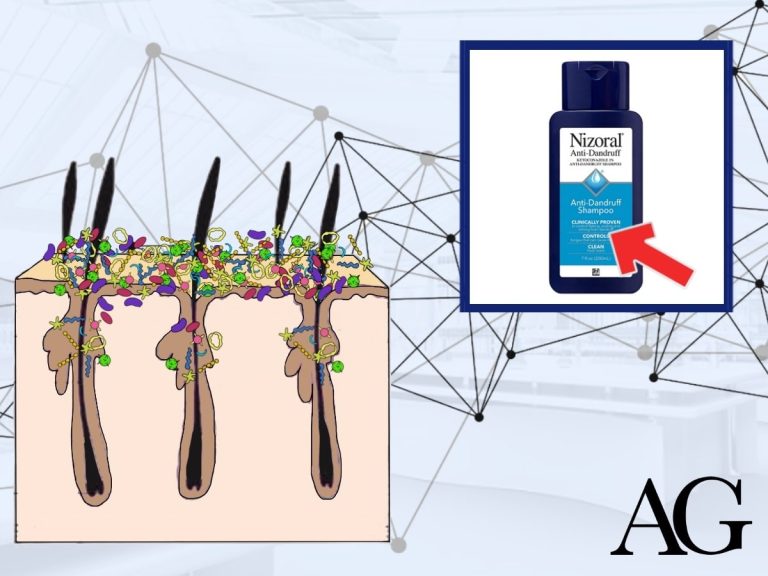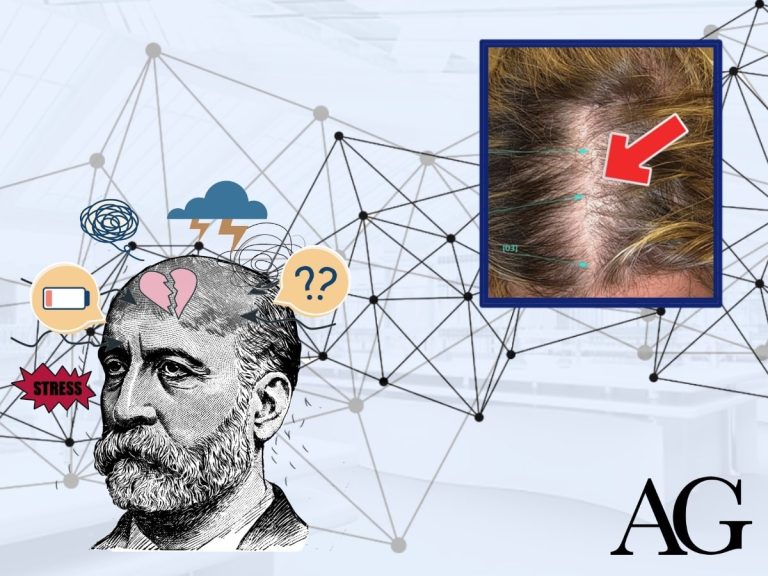Yet another natural DHT blocker used in various supplements and lotions marketed to hair loss sufferers is stinging nettle. You heard that right, stinging nettle extract (also known as ‘Urtica Dioica’) is being used orally and topically for hair loss.
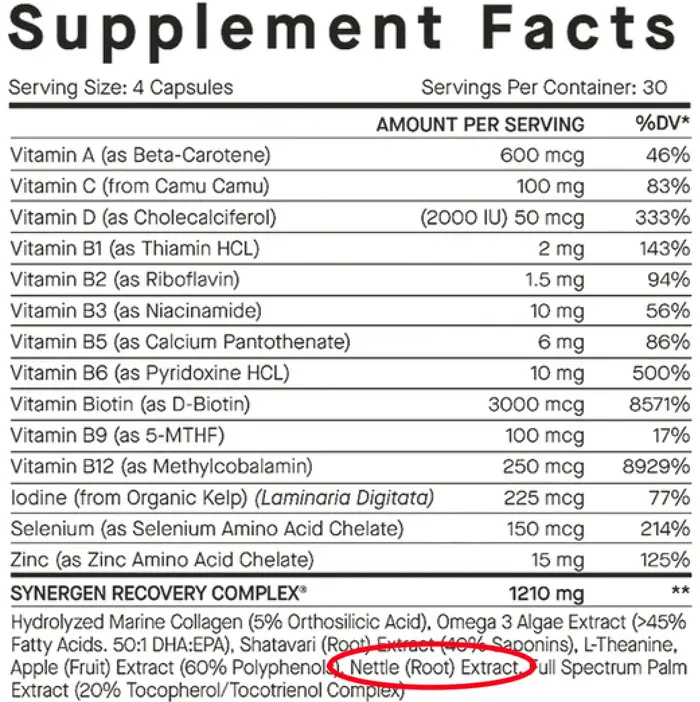
Why are brands adding stinging nettle into their hair loss products? Is this a marketing gimmick or is this ingredient clinically proven to support hair health?
Stinging nettle and hair loss. Is there a link?
Stinging nettle is a flowering plant (often considered a weed), yet it’s widely talked about in the context of hair loss treatments. This plant contains several compounds believed to reduce inflammation, DHT (dihydrotestosterone – an androgen associated with hair thinning) and support the hair follicle microenvironment.
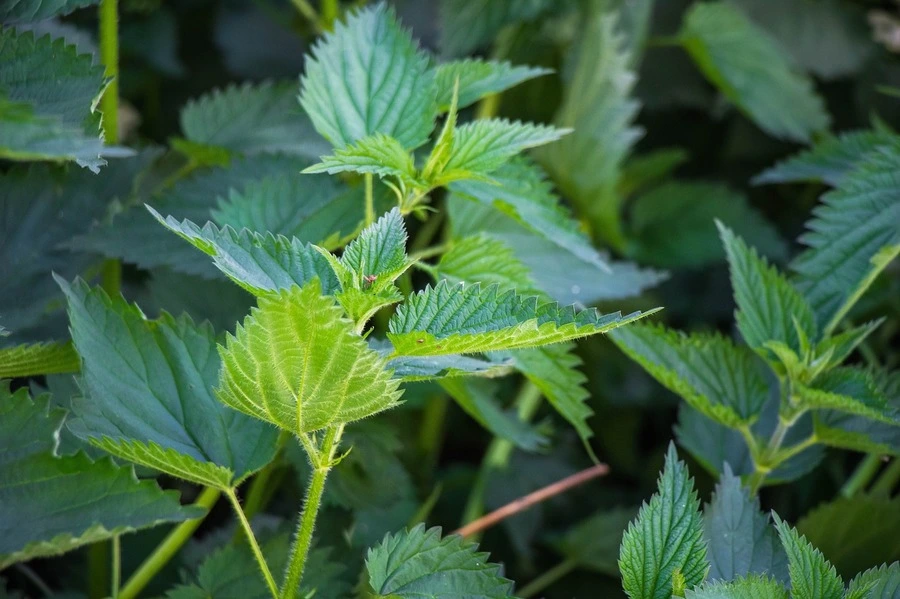
Individuals use stinging nettle either in its whole form, as an extract or by isolating specific components like gallic acid or zinc-protein complexes.
Stinging nettle contains an abundance of micronutrients such as Zinc, Copper, Manganese, Cobalt (needed for vitamin B12) and more. In theory, these micronutrients can help support hair health. Let’s look at the evidence to support stinging nettle as a hair loss blocking ingredient.
How does stinging nettle promote hair growth?
Anti-inflammatory properties
Stinging nettle has a high concentration of chlorophyll. Chlorophyll is the pigment molecule that gives plants their characteristic green color. And guess what? Chlorophyll has been shown to be a useful anti-inflammatory for hair loss.
This is relevant because more often than not, balding scalps are subject to inflammation. You can read more about the link between hair loss and inflammation in our free e-book.
A review on stinging nettle concluded it had great anti-microbial activity. This anti-microbial action may also contribute to the plant’s anti-inflammatory properties.
DHT reduction
Stinging nettle contains phytochemical such as flavanols that are able to counteract DHT. The popularity of stinging nettle in the hair loss scene arose after proving it’s DHT blocking properties.
Stinging nettle extract was used in studies on mice with prostate hyperplasia (a disease where the prostate gland enlarges, and primarily thought of being caused by the influence of DHT). In these studies, stinging nettle showed a therapeutic effect.
These findings were confirmed in clinical trials that showed stinging nettledoes indeed reduce prostate hyperplasia in humans.
Since stinging nettle by itself reduces systemic DHT production without altering testosterone production, it has anecdotally also been used by bodybuilders to reduce androgenic effects from certain steroids.
Aromatase inhibition
Furthermore, secoisolariciresinol also found in stinging nettle can modulating the aromatase enzyme. Aromatase is the enzyme that converts testosterone into estrogen.
Stinging nettle extract may inhibiting aromatase, which is generally raised in androgenic alopecia and metabolic dysfunction.
Dermal papilla support
The dermal papilla is a tear-shaped pod found at the base of the hair follicle. The papilla is vascularised and provides the matrix with nutrients for hair growth.
Stinging nettle contains large amounts of gallic acid. This has been shown to support the hair follicle’s microenvironment, such as the dermal papilla.
Do stinging nettle products actually help fight hair loss?
So far, all of the benefits discussed are based on petri dish studies, animal studies or clinical trials evaluating stinging nettle within the context of disorders other than hair loss.
So, does stinging nettle actually produce real life results in humans? Or are marketers jumping to conclusions based on petri dish studies?
After all, I’m sure petroleum in a petri dish can kill cancer cells, this doesn’t mean we should feed cancer patients petroleum! This example is a bit over the top, but you get my point (petri dish studies don’t necessarily translate to real life results).
Quality studies on stinging nettle and hair loss are scarce. No randomised, controlled trials exist as of writing this article.
A research team in Slovenia conducted a single-blinded clinical trial where they created a shampoo formulated with stinging nettle root extract and other herbal ingredients.
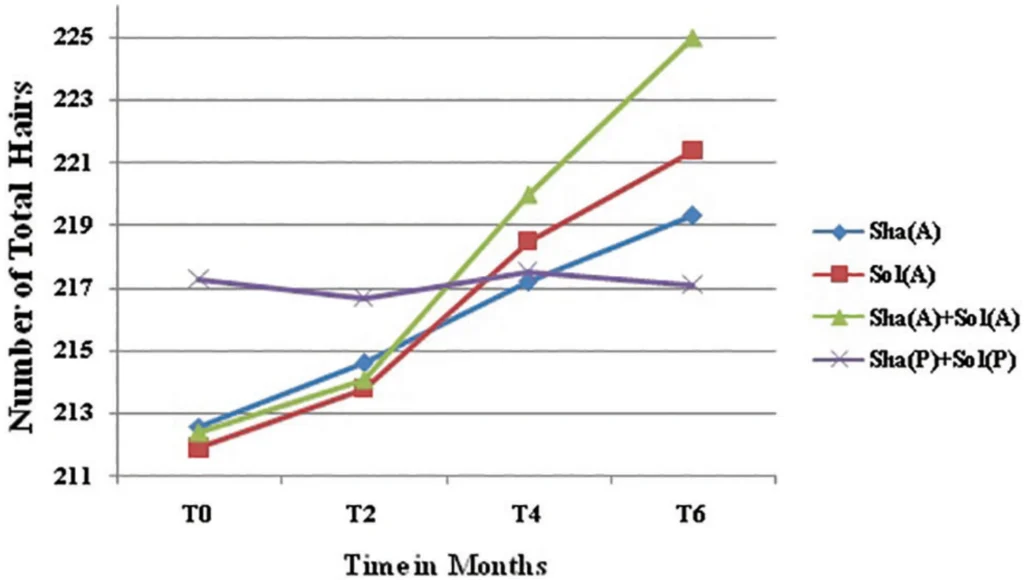
This graph shows that at the beginning of the study, the hair count for the placebo was 217. Hair counts for treatment groups were around 210-213. After six months (T6), hair count for placebo stayed the same but hair count for the best group rose to 225. That’s a 15 hair count increase at best.
This is only a mild increase in hair count. Furthermore, given that the shampoo used in the trial contains many ingredients, it is hard to discern how much of the hair growth can be attributed to nettle root extract.
Parting thoughts
Frequency and dosage
Stinging nettle extracts are made up of the roots, the leaves, or a whole-plant combination. The dosage across studies relating to conditions other than hair loss typically range from 200 mg to 1000 mg per day.
Oral vs topical usage
Given the lack of data, this will come down to individual preferences. Topical formulations may lead to beneficial effects on the scalp such as seborrheic dermatitis associated alopecia.
Having said that, oral supplementation may be best in order to reap the general health benefits stinging nettle can provide.
Side effects
There is a small chance of an allergic reaction. After all, its called *stinging* nettle for a reason. A patch test is recommended to ensure you don’t experience any rashes if you intend to use this topically.
Efficacy
The lack of data on stinging nettle makes it difficult to draw hard conclusions about its efficacy.
Overall, there is limited evidence that stinging nettle is powerful enough to stop or reverse pattern hair loss. Lack of evidence does not mean it doesn’t work however, since no strong data exists, I would not recommend this as a stand-alone treatment for hair loss.

